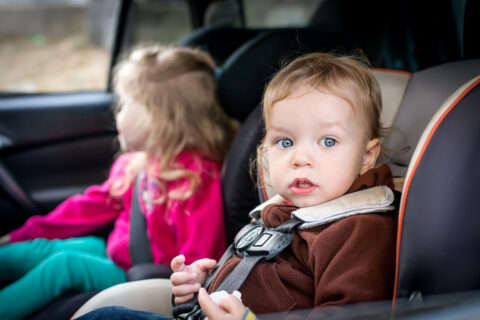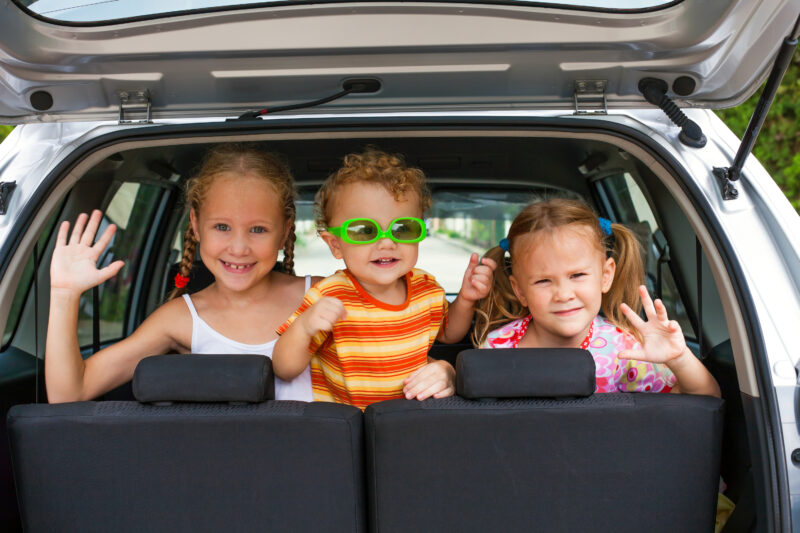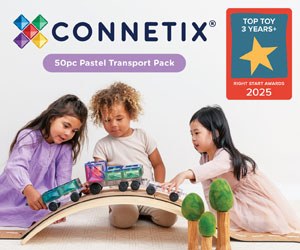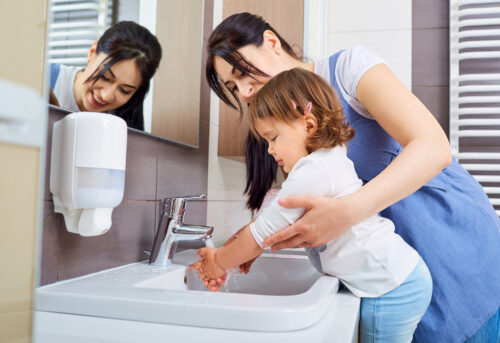Safety
This should always play a crucial role in your final choice. Most cars nowadays feature basic safety measures such as airbags, anti-lock braking systems (ABS) and electronic stability control (ESC) as standard. But as technology continues to advance, some cars offer even more advanced protection for families.
One quick way to assess the safety level of a car is by looking at its Euro NCAP score. The rating, which goes from one to five, indicates how well the safety equipment is likely to protect you from real-life accident scenarios.
Specifically, if you plan to have young passengers on board, take a closer look at the Child Occupant Protection scores. Among many things, they evaluate the car’s ability to accommodate child restraints – such as ISOFIX points – that will help you chauffeur your kids safely.
Boot space
With little travellers keeping you company on your trips, you’ll
understand the importance of having plenty of space at the back to carry
toys and a change of clothes.
If your children are very young, there’s a chance you’ll need a
pushchair on hand too. So, finding a car that has a big enough boot to
store your kids’ essentials can create a few headaches!
To avoid unpleasant after-sale surprises, consider measuring your
child’s travel system and checking the boot’s specifications. For
example, the Volvo XC90 or the Kia Sorento have roomy boots that can
host a pushchair without any trouble.
If your kids are a little older and regularly attend football
training or dance classes, a Skoda Superb Estate can do the trick as
well. Its 660-litre boot is generous enough to transport about 65
standard-sized footballs to the training ground!
Fuel efficiency
The cost of fuel is currently a key issue, with prices so high. As well
as contributing to preserving the wellbeing of our planet, a car with
good fuel economy can save you precious money at the pump or electric
charger.
You’re likely to jump behind the wheel more often than in your
child-free days - ferrying your kids here, there and everywhere. You’re
also carrying a heavier load than before, which impacts on the
performance and efficiency of your vehicle.
Spacious models like the Toyota Prius or the Subaru Outback can take
your family from A to B without spending a fortune to get there.
Entertainment
Anyone who has enjoyed long road adventures with the family will know
all too well that keeping littles ones entertained is vital. And you
will want to keep to a minimum the infamous question that all parents
dread – ‘are we nearly there?’
Luckily, modern cars have advanced infotainment systems that can keep
the whole family engaged as you travel. Most newer models will also
have Android Auto and Apple CarPlay connectivity, allowing you to play
your loved ones’ favourite tunes or podcasts.
The Mercedes-Benz S-Class, for instance, is a comfy family sedan with
great rear-seat entertainment systems. This model has two monitors
built inside the front headrests, meaning your little passengers can
watch DVDs or play video games at the back.
Visit https://www.cinch.co.uk/used-cars/bmw
INSTALL YOUR CAR SEAT SAFELY
Driving with an unsuitable, incorrectly fitted, or no child car seat
at all can put the well-being of your young passengers at risk, and you
may be issued with a fine of up to £500
if caught by the police. Current regulations in the UK state that children must use a child car seat until they are 12 years old or 135cm tall. Once they’ve grown older or taller than the age or height limit, they’ll have to wear a standard seat belt like all adult passengers. Here are Sam Sheehan’s tips for buying and fitting car seats wisely and avoiding costly and possibly unsafe mistakes:
Overlooking the child car seat manual
One of the most common errors when buying and installing a child car seat is not reading the seat’s manual carefully as every car seat has specific requirements for safe installation.
Before buying a new car seat, check your vehicle owner’s manual to make sure it is compatible with your car. The manual will also allow you to spot ISOFIX anchoring points inside the car, designed to ensure your child seat is securely locked in.”
Not picking the right height and weight-based seats
Don’t make the mistake of picking a car seat without doing your research into height and weight limits.
Height-based child seats are known as ‘i-Size’ seats. All permitted height-based seats have a label featuring a capital ‘E’ in a circle and ‘R129’.
Weight-dependent seats will also show a capital ‘E’ in a circle, as well as the code ‘ECE R44’. To ensure better protection, these seats are divided into different groups according to the child’s weight or age.
For a baby under 15 months old and weighing up to 13kg, you’d be looking at a Group 0/0+ model. For children aged over five or six and weighing between 22kg and 36kg, you’d need to consider Group 3 options.
Installing the seat in the wrong position and at the wrong angle
Some kids will ask to sit in the front with mum or dad as it makes them feel grown-up, but gently remind them that they’ll have plenty of time to buckle up next to the driver in the future.
The safest place to fit your child car seat is in the back seat, away from active airbags. While perfect to protect the head and face of an adult-sized passenger in the event of a collision, airbags can represent a threat to kids’ safety.
The heads of toddlers and young children tends to be large in relation to the rest of the body, making it difficult to maintain an upright position even in a minor accident. This puts them at greater risk of coming face-to-face with the force of an expanding airbag, which can, in turn, cause serious injuries.
It’s also important to recline the seat at the correct angle so that your little one’s head doesn’t flop forward – particularly when asleep. Babies must ride semi-reclined, as this will help keep their airways open.
Some child seats have specific parts or features that will easily allow you to change to the right angle based on your child’s age, weight or height. As always, make sure to read through the seat’s manual for all the details.
Moving to forward-facing seats too soon
It’s only normal for parents to want to see their baby’s face in the rearview mirror, which is why some people choose to install a forward-facing model before it’s recommended.
However, the most secure way to carry a young passenger on board is to strap them into a rear-facing seat, at least until they weigh more than 9kg. Rear-facing models offer a higher level of protection to toddlers’ and children’s delicate necks, heads and spines as the child’s vulnerable body parts are cocooned by the padding and shell of the seat.
Rear-facing seats should always be fitted at the back. If installed at the front, the child’s head will be too close to the airbag and can suffer severe consequences if the bag is activated.
Tightening straps too loosely
Some parents might be tempted to strap their children loosely as they are worried about them becoming uncomfortable during the journey. But not buckling up your kids tight enough could give them inadequate protection if you suddenly need to brake.
So, always strap your little ones in snugly – you should be able to fit about two fingers between the child’s chest and the harness. One way to combine safety and comfort is to remove your kid’s heavy outer clothes. Take their coat off, buckle the harness and then place the clothing item or a blanket over them.
Before setting off, remember to inspect the condition of your child seat straps. If they're showing signs of wear and tear, it might be time to swap them with new ones to ensure your little one is as protected as can be.
Visit https://www.cinch.co.uk/used-cars/audi












